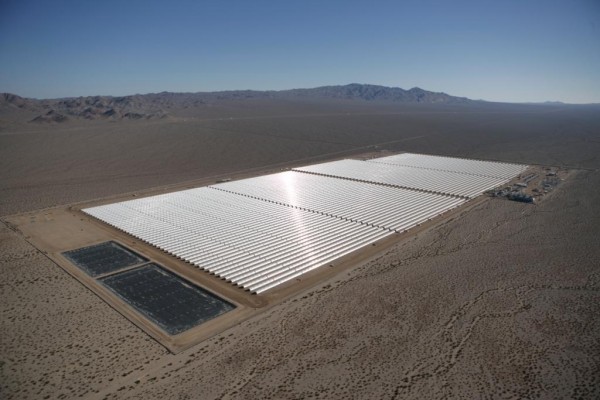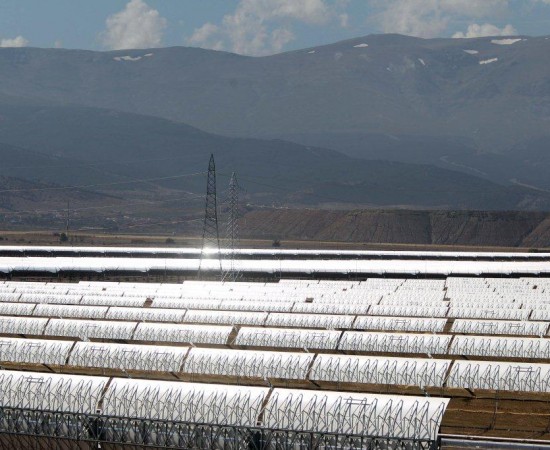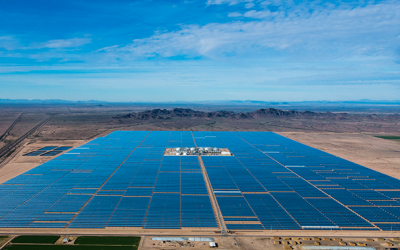Parabolic troughs are the most mature of the concentrating solar power technologies and they are commercially proven. The first systems were installed in 1912 near Cairo in Egypt to generate steam for a pump which delivered water for irrigation. At the time, this plant was competitive with coal-fired installations in regions where coal was expensive.
In the trough system, sunlight is concentrated by about 70–100 times on the absorber tubes, achieving operating temperatures of 350 to 550°C. A heat transfer fluid (HTF) pumped through the absorber tube transfers the thermal energy to a conventional steam turbine power cycle. Most plants use synthetic thermal oil for the job of transferring heat. The hot thermal oil is used to produce slightly superheated steam at high pressure which then feeds a steam turbine connected to a generator to produce electricity. The thermal oil has a top temperature of about 400° C which limits the conversion efficiency of the turbine cycle, so researchers and industry have developed advanced HTFs. One example is direct generation of steam in the absorber tubes, another using molten salt as HTF. Prototype plants of both types are currently being built.
Currently parabolic trough is the most widely used technology around the world, particularly in Spain and in the United States where plants in operation generate over 1000 MW (tbc) and 500 MW, respectively.
Around the world, parabolic trough projects in operation are between 5 and 280 MWe in size, and existing plants are producing well over 3900 MW of electrical capacity. In California nine plants were developed and grid-connected in southern California in the 1980s, forming about 2 million m2 of mirror area, named solar electricity generating systems (SEGS). After an industry hiatus, commercial construction of parabolic trough plants has resumed with the 64 MW project called Nevada One, owned by Acciona, which will produce 130 GWh of electricity annually. In Spain, the Andasol and Solnova projects in construction will together provide 250 MW of capacity, and more than 14 more projects of their type are proposed since the introduction of a sufficient feed-in tariff. The largest single parabolic trough installation yet proposed is called Solana, and is planned for a site in Nevada.
Current power plants in Spain are limited to 50 MW per plant by the Special Regime. About 60% of the plants which have been registered for the FiT include a molten salt two-tank system providing 7.5 hours of storage. In the United States, power plants are built with much larger turbines (>100 MW), taking advantage of the fact that, in this technology, while energy collection performance is practically unaffected by size, costs of generation are lowered considerably.
In terms of the maturity of the technology, Parabolic Trough can be considered “mature”, since a number of manufacturers are available for erecting entire plants or subsystems. There is good experience in engineering procurement and construction (EPC) and 20-year operating experience allows for good confidence on the operation. Therefore, these can be considered low-risk projects.






